

 The South African
The South African
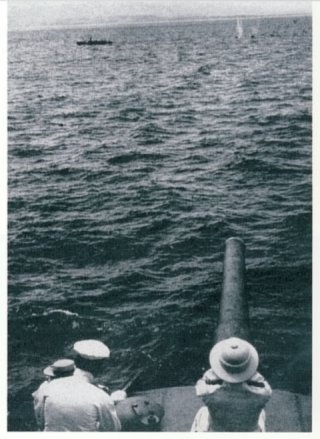
Sometimes it is the unremarkable things that make a historian's heart beat faster. Based on research in the captured weapons collection of the US Marine Corps Museum in Quantico, USA, the author stumbled upon a rare practice weapon - and an exciting chapter of German colonial history. Unheeded and incorrectly labelled, the supposed 'booby trap', captured somewhere in the Asian region by the Marines and brought back to the US, leaned into the back corner of a shelf. Unidentified and with no obvious purpose, the apparatus gathered dust over the years. Recent extensive research has brought light into darkness, however, and the item has a name. It is an 'Abkomm-Lauf n/A' (a small calibre training device for inserting into big bore cannons) of the German Imperial Navy, and probably one of the last of its kind.
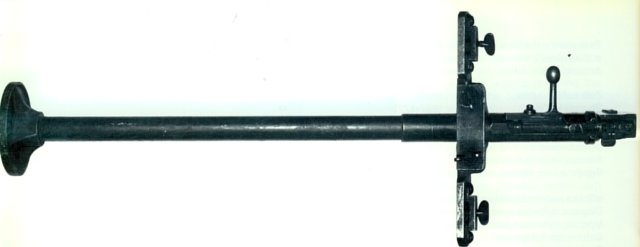
Flashback to July 1914
Shortly after the outbreak of war, the German light cruiser, SMS Emden left the port of Tsingtau in the German protectorate, Kiautschou (China). Its mission was the disruption of enemy merchant shipping. As early as 4 August 1914, the Russian freighter, Rjasan, was captured. This initial success of the Emden was most fortuitous, because provision was made for the Rjasan to be retrofitted as an auxiliary cruiser in time of war when she was initially built for the Russian fleet on the Schichau shipyard at Elbing in 1909.
At Tsingtau, the captured Rjasan was equipped with the guns of the decommissioned gunboat SMS Cormoran (eight pieces of 10,5cm Schnelladekanone [rapid-loading cannon] L/35). Just four days later, she departed under the command of Lieutenant Commander Adalbert Zuckschwerdt as the auxiliary cruiser, SMS Cormoran. When, soon thereafter, she cruised in the waters near the German colonies in New Guinea and the Bismarck Archipelago, she faced a recurring problem in this area - an insufficient supply of coal. On 14 December, she put into Apra harbour on Guam. With the United States of America not yet having taken sides in the war, the German crew hoped to acquire enough coal from the American administration of the island to enable the ship to continue the journey to another port. But there was (allegedly) far too little coal in stock on the island and so the SMS Cormoran was trapped. Commander Zuckschwerdt had no alternative but to leave the ship interned. During the next two years, a friendly coexistence developed between natives and the crew, some of whom lived in self-built huts in the harbour area.
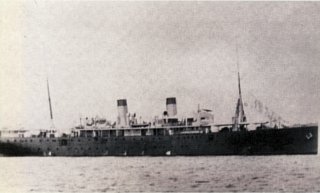
The USA enters the war
On 7 April 1917, the peace on Guam suddenly ended. The United States of America had entered the war. Immediately after the declaration of war, a detachment of US Marines stationed on Guam was sent to take possession of the SMS Cormoran and prevent the escape of the Germans. However, the Marines arrived too late. Explosive charges had already been placed and, as the Americans approached, they noticed a frenzy of activity on board. One soldier took his rifle and fired in the direction of the front deck. This was the first American shot at a German soldier in the First World War.
The wreck of the SMS Comoran
After the ignition of the explosive charges, the SMS Cormoran sank within minutes. Seven of the crew died in the incident and were buried with full military honours on Guam Island. The remaining 353 men were taken to the US prison camp at Fort Douglas, Utah. The wreck of the SMS Cormoran, resting in water 34 metres (37 yards) deep, has become a popular destination for divers. Directly adjacent to the wreck rests a victim of the next war, the Tokai Maru, a Japanese freighter that was sunk during the Second World War.
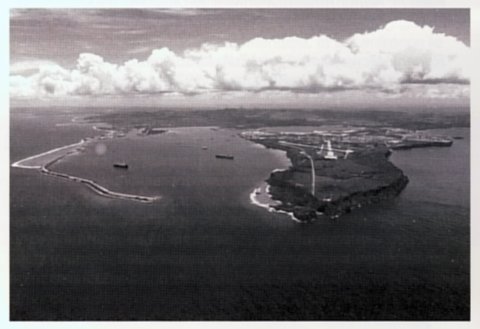
Amongst the salvaged items and weapons that the US Marines collected ashore, there was the odd-looking training device. Its purpose was not realized and thus the device was attached to a tag labelling it a 'booby trap'. Eventually, it passed out of mind.
The Abkomm-Lauf n/A training device
Similar training devices are still used to practice the aiming and shooting of ships' guns using cheaper, small calibre ammunition. In addition, the use of these devices protects the bores of the valuable barrels of the large naval guns. In the First World War, the crew typically trained by firing at a target mounted on a small boat that was towed by another ship. Earlier training devices were fixed to the outside of the guns, but the SMS Comoran's 'AbkommLauf n/A' (where 'n/A' refers to 'neue Art' or new model) was inserted into the gun's barrel so that it could shoot in the actual direction of the bore axis.

As a basis for the training barrel, an obsolete Mauser Jagerbuchse 71 (Mauser Model 71 Rifle) was cannibalized. Its barrel, system and bolt were used. The original markings on these parts were not sanded or altered so the model name, the year of manufacture and serial number of the original weapon remained intact. The sights were omitted because they were not required. On the octagonal section of the barrel, a thread was cut and a ring was welded on near the muzzle. Both served to hold a robust steel tube that would protect the barrel from damage during use. This tube is fixed in place by a screw. In the middle of the tube is an air hole, drilled for ventilation of the hollow space.
At its front end, the steel tube is turned down, with an external thread. This was used for screwing on the so-called 'Lagerscheibe' (bushing disk). This disk corresponded exactly to the inner diameter of the gun's barrel and made sure that the training device's barrel was adjusted exactly on the axis of the bore. By replacing the bushing disk, the training device could thus be used in guns of various calibres. According to Regulation DE Nr 389 of 1906 the hub of the bushing disk 'used with guns from calibre 24 cm upwards ... is extended to a sleeve and stiffened by ribs'. In practice, it would seem that this was probably made in smaller calibres too, because the specimen in question, despite its small calibre of only 10,5 cm, also has stiffening ribs at the bushing disk.
The training device was fixed to the gun's breech end with the help of a 'Lagerstuck' (bushing piece), a portion of mild steel applied to the octagonal part of the barrel and then clamped to the breech end with two wing-screws. Due to the octagonal shape, it cannot be twisted.
To fire the training device inside the barrel, some modifications to the device were necessary. The trigger guard was bent into a ring-shape around the eye of the 'Abzugsstuck' (trigger piece). This could be activated later by a lanyard or electrical firing device. To protect the mechanism, the bare system was put into a stable, brass 'SchloBkasten' (trigger box), fixed with two screws from the bottom, which engaged the threaded sleeve of the rifle system. The two wing-screws, which can be seen in the photographs, were used for attaching an electrical firing device. The trigger piece was held in place by a U-shaped bracket below the trigger box.
The installation of the training device was easy. The breech block was opened and the device was then pushed in to the barrel of the gun. According to official regulations, the crew had to be extremely vigilant in ensuring that no excessive pressure was exerted and that the bearing plate did not tilt in the gun's barrel. A bent bushing disk would lead, inevitably, to inaccuracies when shooting on the target. After inserting the bushing piece into the two retaining hooks on the breech end, the two wing-screws had to be tightened.
During practice shooting, the device's barrel had to be rinsed with soapy water from time to time to avoid heavy soiling. Rapid-fire was not allowed. After use, the barrel was thoroughly cleaned and the metal parts were lubricated with gun oil or petroleum.
The specimen shown here has had a long journey, but it is precisely these circumstances that have ensured its survival until today. The other training devices remaining in the Imperial German Navy are thought to have been scrapped after the war, if they were not lost with the German fleet at Scapa Flow. No identical training device could be traced in other museums and collections, suggesting, perhaps, that this may be the last of its kind.
With acknowledgment and a special thanks to AI Houde at the Nationa! Marine Corps Museum in Quantico (www. usmcmuseum.com) and the Navy Museum in Wilhelmshaven, Germany (www.marinemuseum.de).
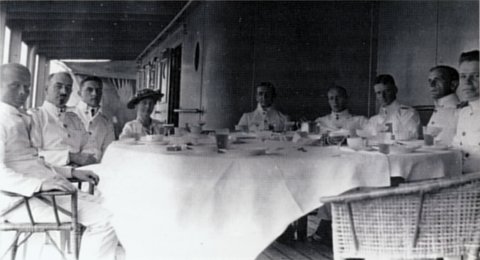
Return to Journal Index OR Society's Home page
South African Military History Society / scribe@samilitaryhistory.org